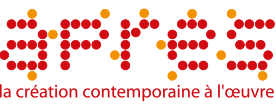When art abolishes borders
A film by Véronique Godé & Damien Faure
Year of production: 2025
Duration: 52 min.
Soon available in English
The film by Véronique Godé and Damien Faure, narrated by Charles Berling, depicts the dialogue between contemporary art and heritage within the Château d’Oiron, Centre des monuments nationaux, located in the Deux-Sèvres department, in Poitou.
It is in this exceptional setting that Jean-Hubert Martin has created a cabinet of curiosities based on works from the collection of the Centre national des arts plastiques.
The Château d’Oiron forges strong and lasting ties with the region’s inhabitants through collective, participatory, and collaborative works. Artist Christian Boltanski had created several hundred portraits of Oiron schoolchildren, photographed 25 years ago, creating a bridge between past and present. Raoul Marek invites 150 guests each year for a ritual dinner. Artist Laurent-Marie Joubert celebrates the 30th anniversary of the Château d’Oiron collection with the help of South African female muralists and the inhabitants of Thouars.
This unique place shows how art contributes to abolishing borders, whether local, territorial or international, but also to breaking down psychological barriers between the public and the museum or even to building a bridge between works of the past and the most contemporary art.
With the interventions of Jean-Hubert Martin, Curator, Jean-Luc Meslet, Delegated administrator of the castle, Marie Lavandier, President of the Centre des monuments nationaux, Béatrice Salmon, Director of the Centre national des arts plastiques and with the artists Raoul Marek, Laurent-Marie Joubert as well as the volunteers, the participants, the members of the associations, the guides and the visitors of the castle.
More informations
Category
"When art... Collection", Contemporary art, Exhibition, Heritage, Installation, Painting, VOD (eng)
